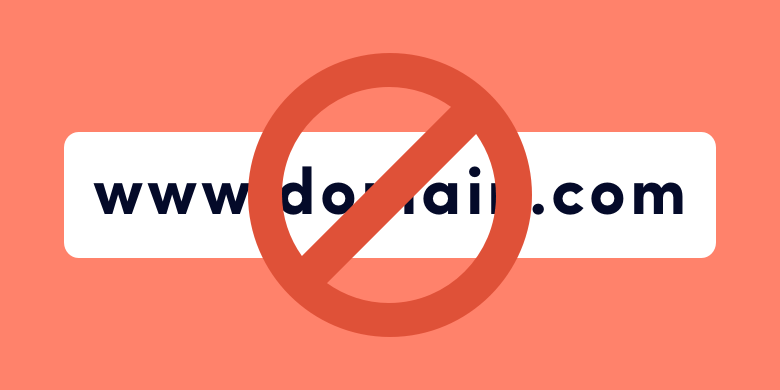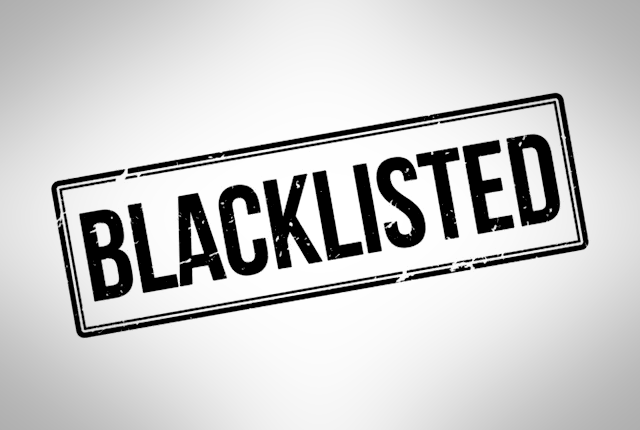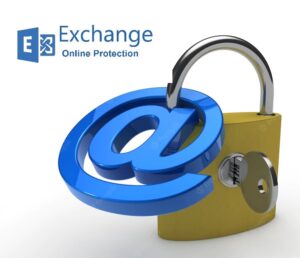Blacklisting happens for any number of reasons. Most typically, it occurs when an IP address is suspected of sending spam. Continual blacklisting affects your IP reputation because your IP address is identified as a regular source of spam. Blacklisting is a common challenge in email marketing. If you depend on email marketing, you have probably found your IP address or domain on a blacklist more than one.
1. What is an Email Blacklist?
An email blacklist is a real time list of IP addresses and domains that are flagged as suspicious of sending spam emails. Internet service providers, email service providers and anti-spam agencies use blacklists to identify and block spammers. Additionally, DNSBL (Domain Name System-based Blackhole List) or RBL Real-time Blackhole List are technical terms for email blacklists. Most businesses end up on email blacklists as a result of poor email list hygiene. This involves sending emails to invalid email addresses with misspellings, typos or just plain fake email addresses. In this article, we will discuss;
- The importance of understanding how blacklisting works. This is especially necessary for businesses that rely on email marketing
- Types of blacklists and blacklisting
- How businesses end up on email blacklists
- How internet service providers use spam traps to blacklist spammers
- Email marketing best practices that help avoid blacklists
- How to delist from an email blacklists
2. Understanding Email Blacklists and Blacklisting
2.1 What does being blacklisted mean?
As mentioned earlier, blacklisting is the process of identifying IP addresses or domains of known/suspected spammers and blocking content from those addresses. When a user sends an email, ISPs check the IP address where the email originated from against blacklists. An IP address is a string of digits that uniquely specify which server the email came from. Once the ISP verifies that the IP address does not belong to any blacklist, the email goes through other filters depending on your provider.
When blacklisted, this means that your emails will not reach the intended mailbox. This wreaks havoc on your marketing activities, especially if the sum of it is done through email.
Understanding how blacklists work is important as this affects;
- Email deliverability; email delivery rates is the number one metric businesses use to measure email marketing. Therefore, sending emails from blacklisted IP addresses or domains leads to hard bounces. Also, your emails end up in the spam/junk folders of your recipients’ mailboxes.
- Your sending reputation; looking like a spammer coupled with hard bounces gives your domain a bad sending reputation. This will also eventually wreck your email open rates
If you are looking at email marketing as your main ROI driving marketing strategy, you must understand what can land you in a blacklist and how to avoid them. This knowledge can make or break your email marketing strategies.
2.2 Categories of blacklisting

There are two main categories of blacklists based on what indicator identifies the source of spam. They are;
i. Internet Protocol (IP) address blacklist
This is a list of email servers that are known sources of spam. ISPs will mark your email server as a source of spam when;
- Your mail server is under attack by botnets such as spambots
- The email server is an open mail relay. This means that anyone on the internet can use it to send emails
- Your email server’s public IP address is known for sending spam
Whenever you send a message via email, it contains a string of digits called the IP address which uniquely specifies the server that the email came from. You can trace the location of an email by referencing the IP address.
When an ISP receives an email, it automatically checks the IP address against a blacklist. If the incoming IP address is on the list, the email is discarded. If it is not on the list, it goes through other filters before reaching the intended destination mailbox. In that sense, a blacklist is just one tool that determines whether an email will be received or not.
Moreover, IP addresses are identified based on their history of sending good or bad emails. If the IP address usually sends good emails, it is cleared for delivery
ii. Domain blacklists
Every email you send has a domain associated with it. This domain is an email sending domain that is seen in From address, Return address and also on the DKIM signing domain.
3. How You May End up on a Blacklist
Poor email list hygiene: Sending lots of emails to inactive addresses or inboxes that have been turned into spam traps is bad for your sender reputation. Many ISPs use harvested emails as pure spam traps and sending lots of emails to these accounts reflects poorly on your company’s email sourcing practices.
Hackers: Hackers access your account to send spam messages. Alternatively, hackers could be spoofing your email address, which means they are piggybacking off your IP address to send fraudulent emails.
High volume of emails: Spammers send the most emails in the world (remember that 80% figure referenced earlier?), so if an IP address has a much higher email volume than other IP addresses, it is likely a sign of a spammer.
Increased email volume: If an ISP notices a sudden spike in email traffic coming from your IP address, it can take that as a sign of spam content. Legitimate organizations usually build their email list slowly over an extended time and sudden spikes look very suspicious.
Spam complaints: Every company will receive some complaints about their email marketing. In itself, that’s not necessarily a bad thing. However, if the number of complaints goes above an accepted threshold, an ISP might put you on the blacklist.
Bad email content: Several ISP filter emails by keywords found in the body of the text. Words like “free”, “money-back guarantee”, CAPS LOCK, colored fonts, and lots of exclamation marks (!!!!) are all red flag content that can get you on a blacklist.
Poor list management; if you frequently do not honor email opt-ins or allow uses to unsubscribe, you are much more likely to land on an email blacklist.
4. Spam traps

ISPs build blacklists by luring spammers using spam traps or spam trap emails. These spam traps target individuals who;
- Harvest and buy email addresses.
- Practice pure list hygiene and send emails to addresses with typos
- Do not use opt-in email lists therefore sending emails to users without permission
There are different types of spam traps that can be your one way ticket to a blacklist.
- Pure or pristine spam traps; these are email addresses that have not been used to sign up, send or receive emails hence you do not expect them to show up on an email list.
- Typo spam traps; these bank on senders’ errors such as misspelling an email address and other typos. When senders send emails to such invalid email addresses, it indicates poor list hygiene.
- Recycled spam traps; these are email addresses that are valid but have been dormant for a very long time. This means that the address has not engaged with email for a long time. ISPs then reactivate them as spam traps
While it may seem annoying to have the emails you’re carefully crafting rejected before they even reach your subscribers, blacklists are actually quite helpful. Nearly 85% of emails send daily are spam. Blacklists exist to keep a large amount of unwanted messages out of people’s inboxes. Very large ISPs have their own internal blacklists. However, many use publicly available ones run by companies that specialize in this field.
5. How to know find out whether you’re on an email blacklist
If receiving email service providers reject or send your emails to junk folders, it may be time to check if you’re on an email blacklist. You can start by checking popular blacklists available;
- Barracuda Reputation Block List: BRBL is a free DNS blacklist (DNSBL) of IP addresses known to send spam.
- Invaluement: The Invaluement anti-spam DNSBL blocks elusive types of spam where the sender is sending unsolicited bulk email and escaping traditional detection methods.
- MXToolBox: MXToolbox shows you whether or not your domain or IP address is blacklisted and can perform checks on your DNS to see how it is configured.
- MultiRBL: This free multiple DNS blacklist service cross-references other blacklists by IPV4, IPV6, or by domain.
- Spamcop: The SpamCop Blocking List (SCBL) lists IP addresses that had mail reported as spam by SpamCop users.
- Spamhaus: The Spamhaus Project maintains a number of DNSBLs as part of their effort to identify and track spam sources, and provide anti-spam protection.
- SURBL: Unlike most lists, SURBLs are not lists of message senders. SURBLs are lists of websites that have appeared in unsolicited messages.
Other than checking available blacklists, you can look out for the following signs of blacklisting such as seriously dropping delivery rates and email bounces.
6. What do you when you realize you’re on a blacklist
It’s simple. Clean up your act and get in the ISP’s good books. Most ISPs give businesses the opportunity to appeal but not without effort. You should;
- Clean up your email lists
- Keep your email lists organic. Do not rent, buy or harvest emails
- Protect your server from botnets and cyber criminals
- Use opt-in email
If you have an email service provider, they are responsible for getting you delisted.
7. Conclusion
Blacklisting is an inevitable part of running a business. It may seem annoying but it is essential in reducing spam emails from untrusted sources. There are many ways which businesses can prevent ending up on a blacklist. The best way to do so is to maintain good email hygiene. Other ways include protecting your email server and using commendable email service providers. Blacklisting is not permanent but continued blacklisting will hurt your reputation in the long run.
MailSafi’s Email Security solution offers protection against blacklisting. This will ensure that you never have to worry about any emails you send bouncing back because your domain has been blacklisted. Contact us today or sign up on our website here.
More resources on common business email challenges
- The High Cost of Business Email Compromise
- Email Authentication – The Ultimate Anti-phishing Solution
- The Cost of Internal Email Spam to Businesses
- Challenges of Running On-premise Mail Servers
![]()





Pingback: Why Even the Best Email Filter Cannot Guarantee 100% Protection